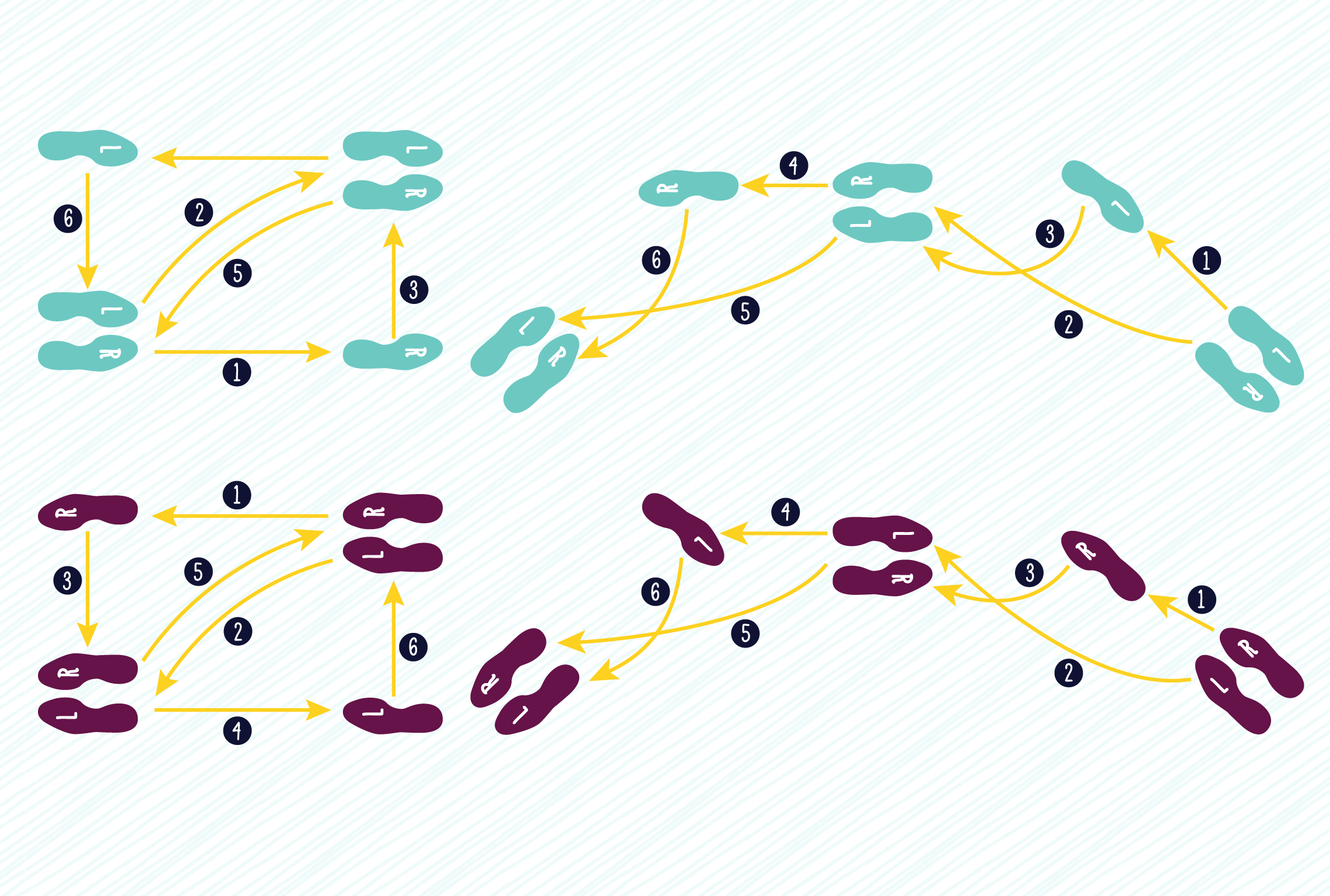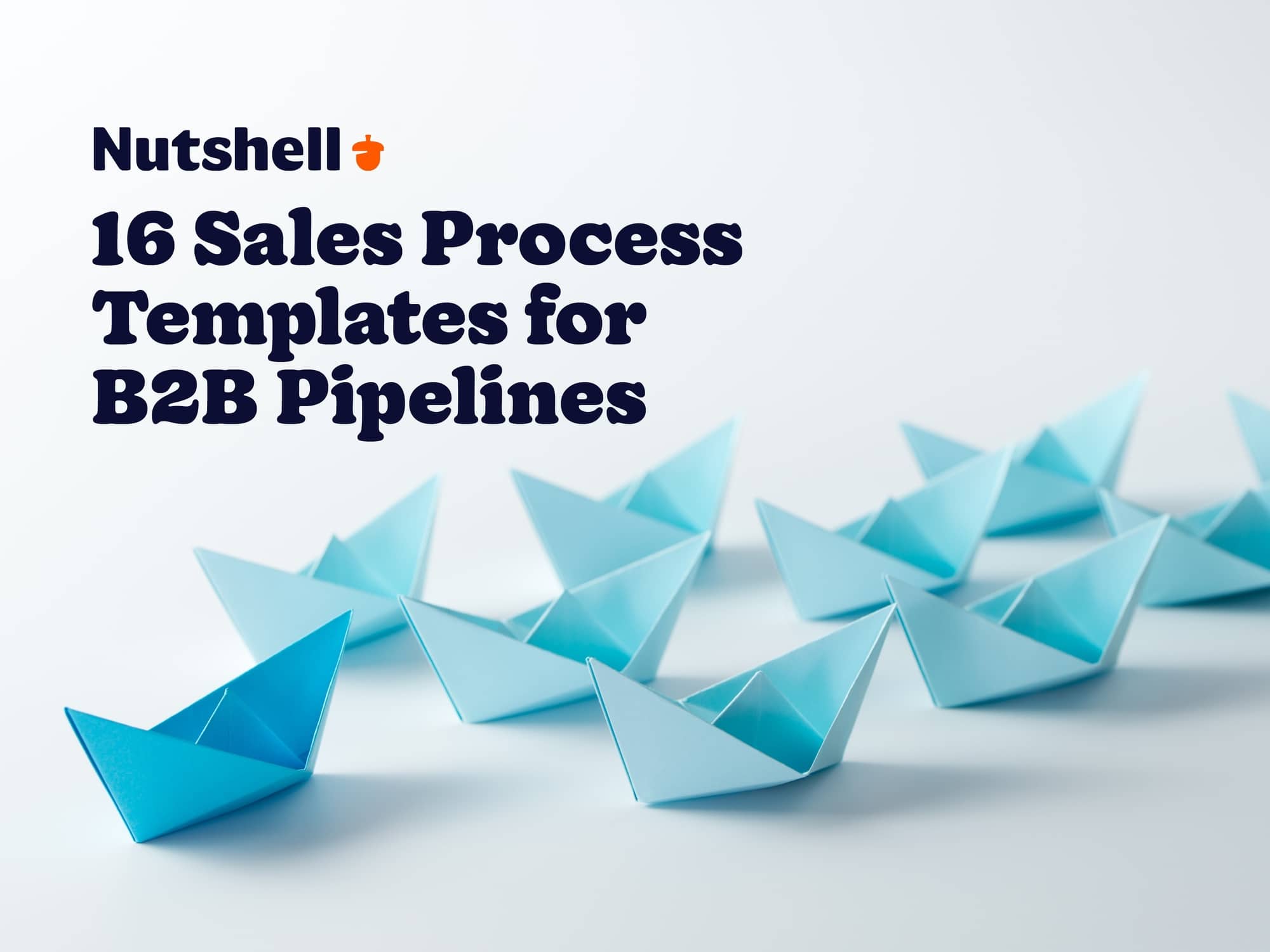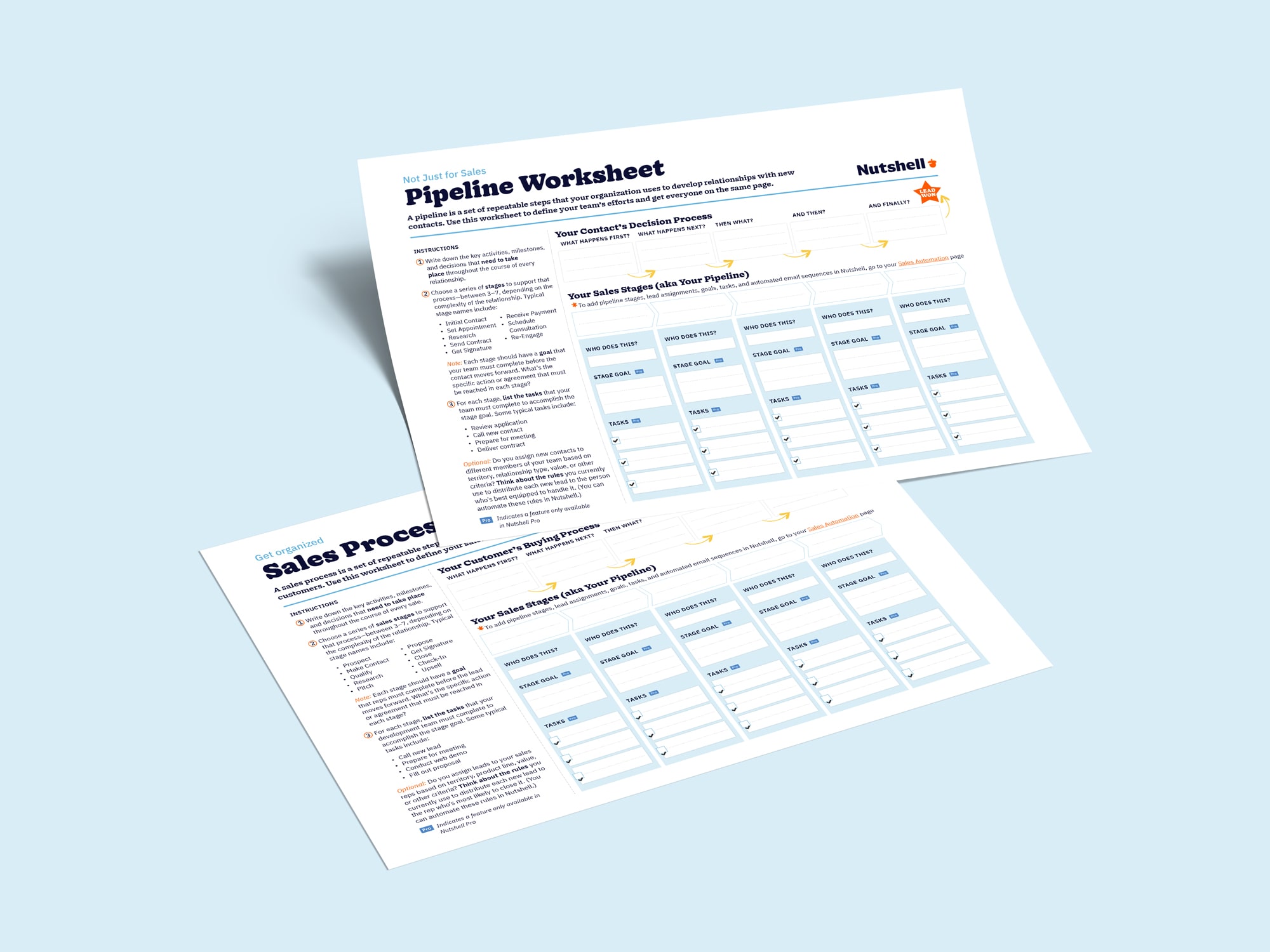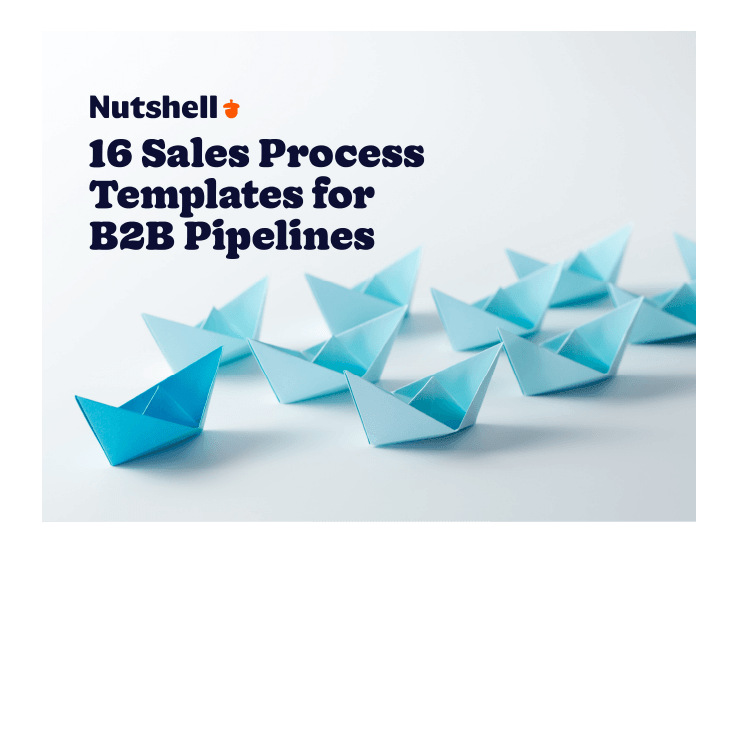
Picking the right sales stages for the way you sell is one of the most important elements of a successful sales process.
Whether you’re building your first pipeline from scratch or want to overhaul an existing process, these sales process templates will give you a great head start.
A sales process is a series of repeatable steps a sales team takes to convert prospects into customers. Having a standardized sales process provides sales reps with a framework to follow, helping them win more deals.
Providing a framework for your sales team through a documented sales process provides numerous benefits such as:
When your sales team has a structure to follow, they’ll spend less time and effort deciding what to do next to move a potential deal forward. It also becomes easier to determine which leads are most likely to convert and deserve the most attention.
When you have a standardized process, you can more easily track the effectiveness of each step and refine your process to improve your results.
When new sales representatives have a documented process they can follow, onboarding is a smoother process and new team members can start getting results more quickly.
Check out these free template downloads and then keep reading for a closer look at some common types of sales processes.
This 28-page PDF includes sales process templates for numerous B2B sales models including outbound, inbound, account-based sales, and more. Whether you’re building your first pipeline or refining an existing process, these sales process templates are a great places to start.

This worksheet guides you through the process of creating a custom sales process for your business including pipeline stages, key activities for each stage, and more.

Ready for a closer look at some common sales processes? Below we’ll explore eight common B2B sales pipeline examples, from simple to complex.
Note: This is the bare minimum set of stages for a sales process with few moving parts. In fact, this is the default template in Nutshell’s sales process builder.
QUALIFY
Confirm that the prospect has the budget and need to make a purchase in the near future. Verify that the point-of-contact is the primary decision-maker; if they’re not, determine who else would need to sign off on the purchase.
PITCH
Demonstrate your solution to the prospect, showing how it would improve their life and/or make them more successful. Encourage the prospect to share questions and objections so you can learn more about how to best serve them.
CLOSE
Overcome last-minute objections, make final negotiations, and obtain a signed contract or initial payment to make the sale official. Then, ensure that your solution is delivered to the customer and schedule your first follow-up touches to retain their business.
PROSPECT
Find potential leads through online/social media research, networking, and asking current customers for referrals.
MAKE INITIAL CALL
Complete the first touch with a new lead via phone call. Explain the key benefits of your solution and determine if there’s mutual interest.
QUALIFY
Confirm that the prospect has the budget and need to make a purchase in the near future. Verify that the point-of-contact is the primary decision-maker; if they’re not, determine who else would need to sign off on the purchase.
PITCH
Demonstrate your solution to the prospect, showing how it would improve their life and/or make them more successful. Encourage the prospect to share questions and objections so you can learn more about how to best serve them.
CLOSE
Overcome last-minute objections, make final negotiations, and obtain a signed contract or initial payment to make the sale official. Then, ensure that your solution is delivered to the customer and schedule your first follow-up touches to retain their business.
REVIEW INCOMING LEADS
Analyze new leads to determine which ones are a close customer fit and worth the sales team’s attention.
COMPLETE QUALIFICATION CALL
Complete the first touch with an interested lead to confirm whether or not they have the budget and need to make a purchase in the near future. Verify that the point-of-contact is the primary decision-maker; if they’re not, determine who else would need to sign off on the purchase.
RESEARCH
Gather more information on the prospect in advance of a formal presentation; learn as much as possible about their company operations, desired outcomes, and the specific needs of all stakeholders.
PITCH
Demonstrate your solution to the prospect, showing how it would improve their life and/or make them more successful. Encourage the prospect to share questions and objections so you can learn more about how to best serve them.
CLOSE
Overcome last-minute objections, make final negotiations, and obtain a signed contract or initial payment to make the sale official. Then, ensure that your solution is delivered to the customer and schedule your first follow-up touches to retain their business.
MAKE CONTACT
Complete the first touch with a new lead via phone call or email. Explain the key benefits of your solution and determine if there’s mutual interest.
QUALIFY
Confirm that the prospect has the budget and need to make a purchase in the near future. Verify that the point-of-contact is the primary decision-maker; if they’re not, determine who else would need to sign off on the purchase.
RESEARCH
Gather more information on the prospect in advance of a formal presentation; learn as much as possible about their company operations, desired outcomes, and the specific needs of all stakeholders.
PITCH
Demonstrate your solution to the prospect, showing how it would improve their life and/or make them more successful. Encourage the prospect to share questions and objections so you can learn more about how to best serve them.
PROPOSE
Prepare and send a detailed proposal covering what you would provide, at what cost and terms, and over what timeline.
GET SIGNATURE
Secure buy-in from the prospect by collecting the signed proposal, and prepare for closing activities.
CLOSE
Overcome last-minute objections, make final negotiations, and obtain a signed contract or initial payment to make the sale official. Then, ensure that your solution is delivered to the customer and schedule your first follow-up touches to retain their business.
REVIEW INCOMING LEADS
Sort through your new inbound leads, filtering out any that seem bogus or clearly aren’t qualified, and prioritizing the leads that fit your ideal customer profile.
ATTEMPT FIRST CONTACT
Make the first call to a new lead in order to introduce yourself and your company. If you reach the prospect’s voicemail box, explain who you are and mention that you’ll be calling back at a certain day/time.
CONDUCT MEANINGFUL CONVERSATION
Complete the first legitimate phone conversation with a new lead. Explain the key benefits of your solution, determine if there’s mutual interest, and offer to provide materials for further education.
QUALIFY
Confirm that the prospect has the budget and need to make a purchase in the near future. Verify that the point-of-contact is the primary decision-maker; if they’re not, determine who else would need to sign off on the purchase.
SCHEDULE DEMO
Get prospect to agree to a time and place to attend a live presentation of your solution via video chat/web conference.
COMPLETE DEMO
Conduct your presentation and schedule a follow-up contact.
OVERCOME OBJECTIONS
Draw out the remaining roadblocks to making the sale and alleviate the buyer’s concerns regarding how your product offering will meet their needs and budget. Explain how your solution is better for their specific needs than competing solutions that they may also be evaluating.
CLOSE
Obtain a signed contract or payment information to make the sale official. Then, ensure that your solution is delivered to the customer in a timely fashion and schedule your first follow-up touches to retain their business.
PASS TO ONBOARDING
Connect your new customer with an onboarding specialist or your Customer Success team, and ensure that the customer gets everything they need to successfully integrate your solution into their business.
IDENTIFY AND PRE-QUALIFY TARGET ACCOUNT
Conduct preliminary research to identify a company that would be an ideal fit for your product or service, in everything from the size of the company to the elements of their business operations that would make your product a valuable addition.
CREATE LIST OF STAKEHOLDERS
Through company website pages and social channels, find out the names of all potential stakeholders who would have a say in the purchase, from sales and marketing staff to departmental heads to C-level leadership.
ASSEMBLE INITIAL STRATEGY
Create your gameplan for the target account, based on what has been successful with similar accounts in the past. Assign stakeholders to your reps, and conduct deeper research to create the personalized content and messaging that the stakeholders will receive.
COMPLETE FIRST ROUND OF CONTACT
Make initial calls and/or send cold emails to everyone on your stakeholder list.
COMPLETE MEANINGFUL CONVERSATION
Identify interest from at least one stakeholder, learn more about their current needs, and pitch them on your solution.
SCHEDULE PRESENTATION
Get stakeholders to agree to a time and place to meet for the live presentation of your solution. Include as many decision-makers as possible.
CONDUCT PRESENTATION
Conduct your presentation and schedule a follow-up contact.
OVERCOME OBJECTIONS
Draw out the remaining roadblocks to making the sale and alleviate the buyer’s concerns regarding how your product offering will meet their needs and budget. Explain how your solution is better for their specific needs than competing solutions that they may also be evaluating. Secure buy-in from all decision-makers.
SEND CONTRACT
Deliver a formal agreement to the buyer laying out the details of the sale as you’ve agreed to them in conversation, and make last-minute negotiations.
CLOSE
Obtain a signed contract to make the sale official. Then, ensure that your solution is delivered to the customer in a timely fashion and schedule your first follow-up touches to retain their business.
Whether you’re building your first sales process or overhauling an existing one, these Nutshell-approved templates will give you a great head-start.

MAKE CONTACT
Complete the first touch with a new lead via phone call or email. Explain the key benefits of your solution and determine if there’s mutual interest.
QUALIFY
Confirm that the prospect has the budget and need to make a purchase in the near future. Verify that the point-of-contact is the primary decision-maker; if they’re not, determine who else would need to sign off on the purchase.
FIRST CONSULTATION
Hold a longer conversation to learn the prospect’s personal and organizational needs. Identify the pain they’re seeking to address, and educate the prospect on the benefits of the product/service type that you’re selling.
PROPOSE A SOLUTION
Based on the prospect’s needs, present a detailed plan for what you can provide that would create the best win-win situation.
CONFIRM THE SALE
Review the customer’s willingness and ability to make a commitment. The goal is to build trust and make the customer as comfortable as possible with the sale.
CLOSE
Handle any last-minute objections and obtain a signed contract to make the sale official.
FULFILL ORDER
Pass the order to your fulfillment team and personally ensure that your product or service is delivered within the timeframe specified in the contract.
COMPLETE FIRST CHECK-IN
Contact your new customer a few days to a week later to see how their experience has been so far, and address any unexpected challenges.
SCHEDULE RECURRING FOLLOW-UP
Schedule contact on a regular basis to provide ongoing guidance, listen to the customer’s needs, and suggest/collect follow-up orders.
ASK FOR TESTIMONIAL/REFERRALS
Once you’ve retained a satisfied customer for a certain period of time, reach out to ask for a testimonial that your organization can use in marketing materials as well as referrals for potential new business.
If your company sells a very complicated solution (such as software for large enterprises), your Customer Success team might use a separate pipeline for training and onboarding users after the sale. Here’s an example of what that might look like:
INTERNAL HANDOFF
Receive new customer details from your sales team and get up to speed on their basic needs.
SCHEDULE INITIAL CALL
Reach out to the new customer via phone or email to introduce yourself and schedule a time to speak more in-depth about how your solution fits into their organization’s goals.
COMPLETE INITIAL CALL
Speak to at least one primary contact primary or admin for 30-60 minutes to gather information about their specific needs and what they hope to accomplish with your product. Before the end of the call, schedule a time for a team training so that every user can get up and running smoothly.
COMPLETE FOUNDATION SETUP
Ensure that your solution is properly integrated within their organization and that all approved users can access it.
COMPLETE TEAM TRAINING
Host a video conference call to guide non-admins through your product and answer any questions that arise.
FINALIZE SETUP
Fine-tune your solution for the customer’s needs (to the best of your ability) and provide them with any other resources they’ll need to be successful. Schedule your first check-in call.
Whatever your sales process looks like, the best way to manage it is with a powerful, easy-to-use CRM like Nutshell. You can easily design your sales process right in Nutshell, integrate automation to make it more efficient, and track your results so you can improve it over time.
To see for yourself how Nutshell can help you get more from your sales process, start a free 14-day trial today.
Choose the model that best fits your business and see how we help teams like yours close more deals.

Join 30,000+ other sales and marketing professionals. Subscribe to our Sell to Win newsletter!